2020 Kuranda soybeans on red soil – Bundaberg
Grower: Ken Bird, Department of Agriculture and Fisheries. The block being monitored is a small trial block involving soybeans for grain and green manure, peanuts, multispecies planting and bare fallow. 6 rows of each crop/treatment are planted in each block of the trial, with 4 replicate blocks in total.
Location: Bundaberg Research Facility, Kalkie Bundaberg
Area: 1.8 ha small trial plot, irrigated, black soil
Pre-planting preparation
- Paddocks were worked with a ripper and limed with 2.5 t/ha of fine agricultural lime before spreading the fertiliser over the top and incorporating into soil to make small beds
- Approximately 263 kg/ha of Legume Max fertiliser was applied pre-planting.
Week 1
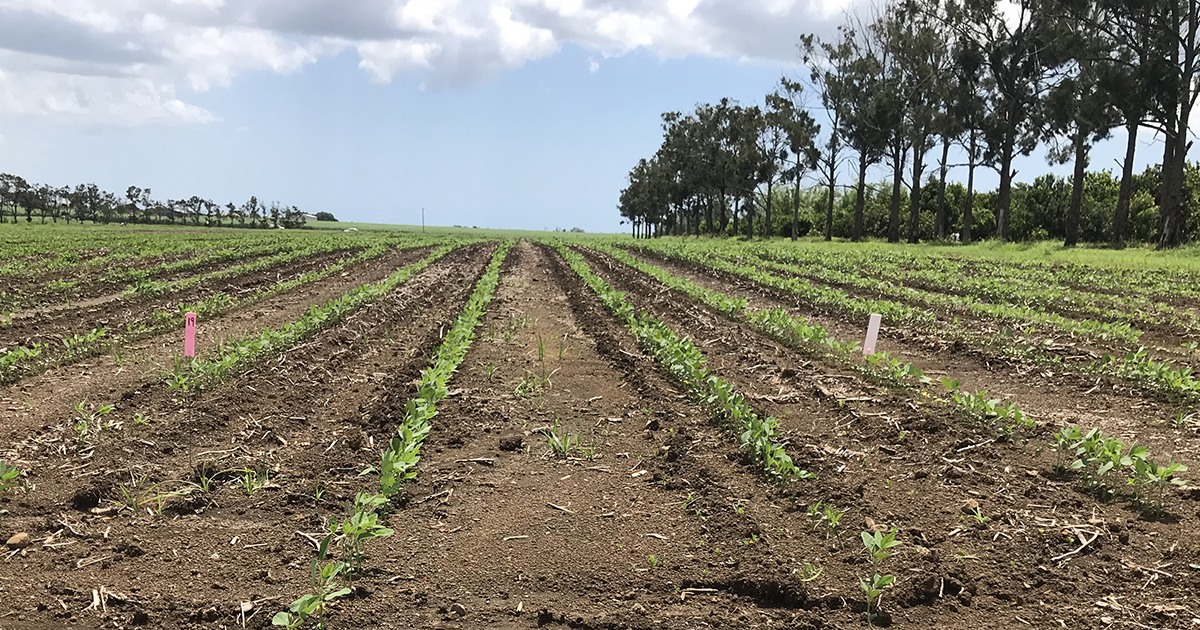
Management notes:
- 3 February 2020 – ‘Kuranda’ soybeans were sown into double-row beds and inoculated with Soybean rhizobium group H by water injection using an electric drive precision planter.
- Seed rate used was 375 000 seeds/ha to aim for a population of 300 000 plants, however upon counting emergence approximately 340 000 plants per ha have germinated.
- Pre-emergent herbicide application of Valor with knock-down herbicide Spray.Seed were applied at label rates before plant emergence.
- Some issues are occurring due to the large amount of rainfall in the Bundaberg region but the soybeans have germinated adequately.
Week 2–3
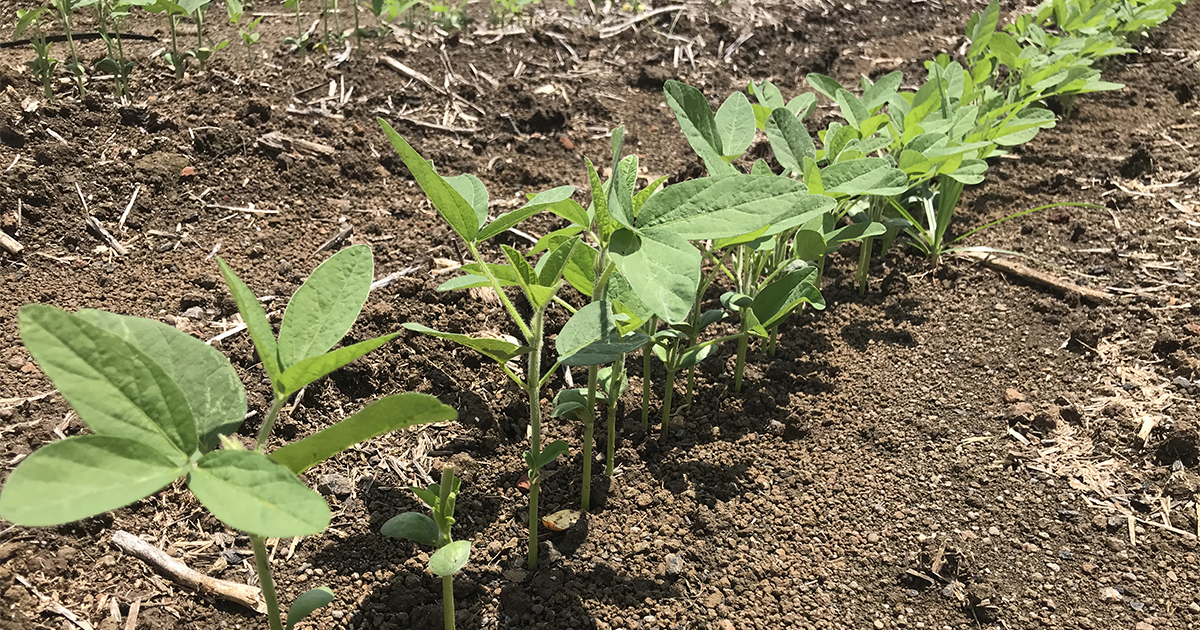
Management notes:
- Soybeans are green and healthy, are growing rapidly under warm, humid weather and have good soil moisture.
- The tops of some plants have been chewed off – most likely due to hare or duck activity.
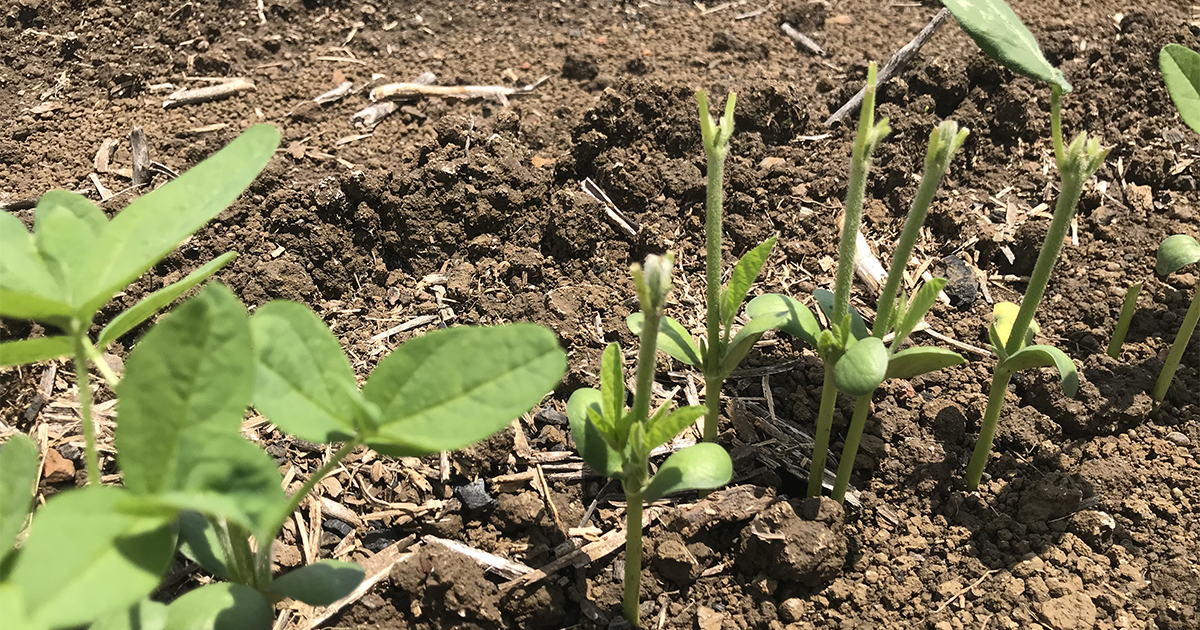 Suspected hare or duck damage.
Suspected hare or duck damage.
Week 4
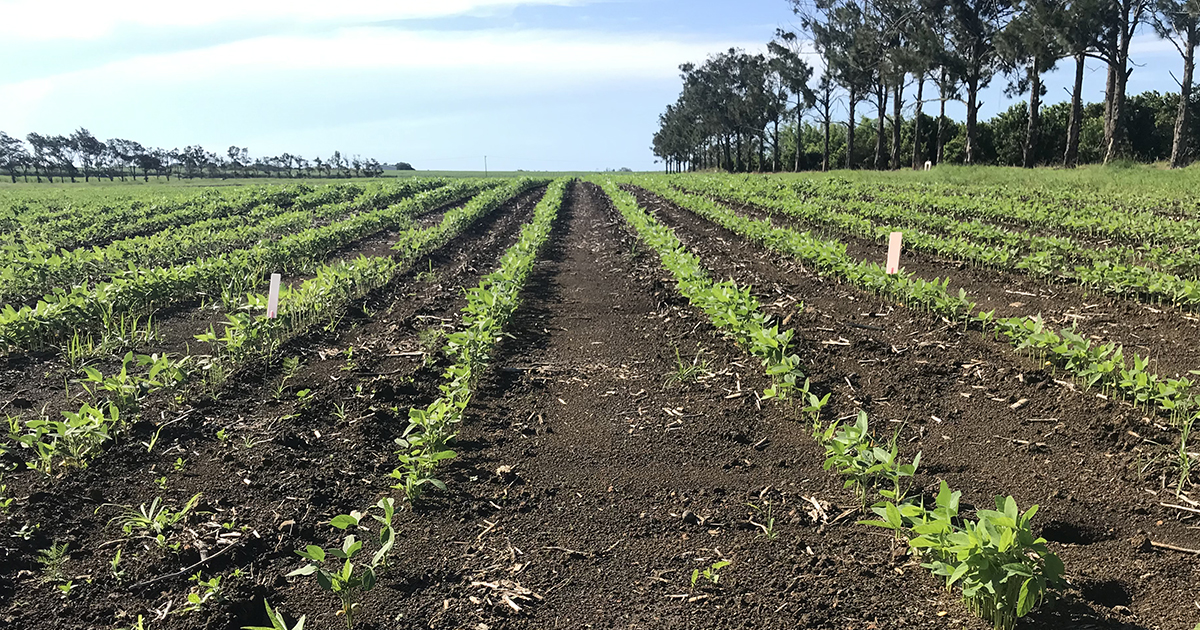
Management notes:
- Plants are looking green and healthy
- No pests were identified today however there is a white flecking on the leaves. Unsure of the cause at this stage.
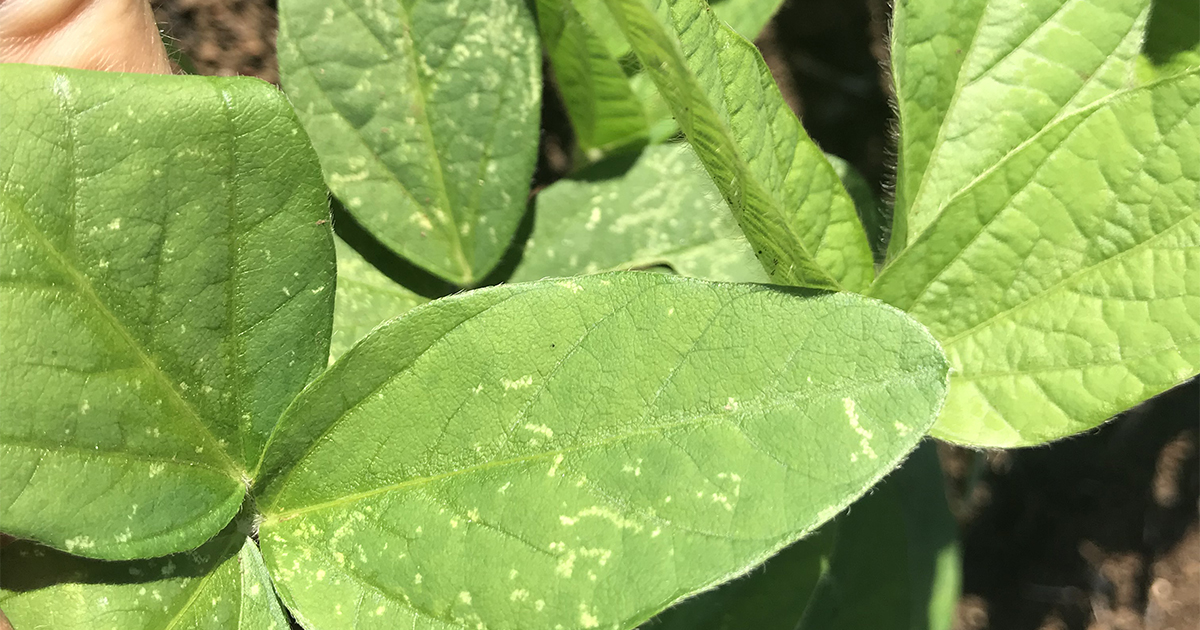 White marks on leaves.
White marks on leaves.
Week 5

Management notes:
- Soys are growing well and are looking healthy.
- Small amount of chewing damage on the leaves. The causal agent appears to be similar to a cluster caterpillar.
- Small number of aphids observed on underside of leaves but not an overly concerning population.
- A few weeds are popping up within the row and between rows.
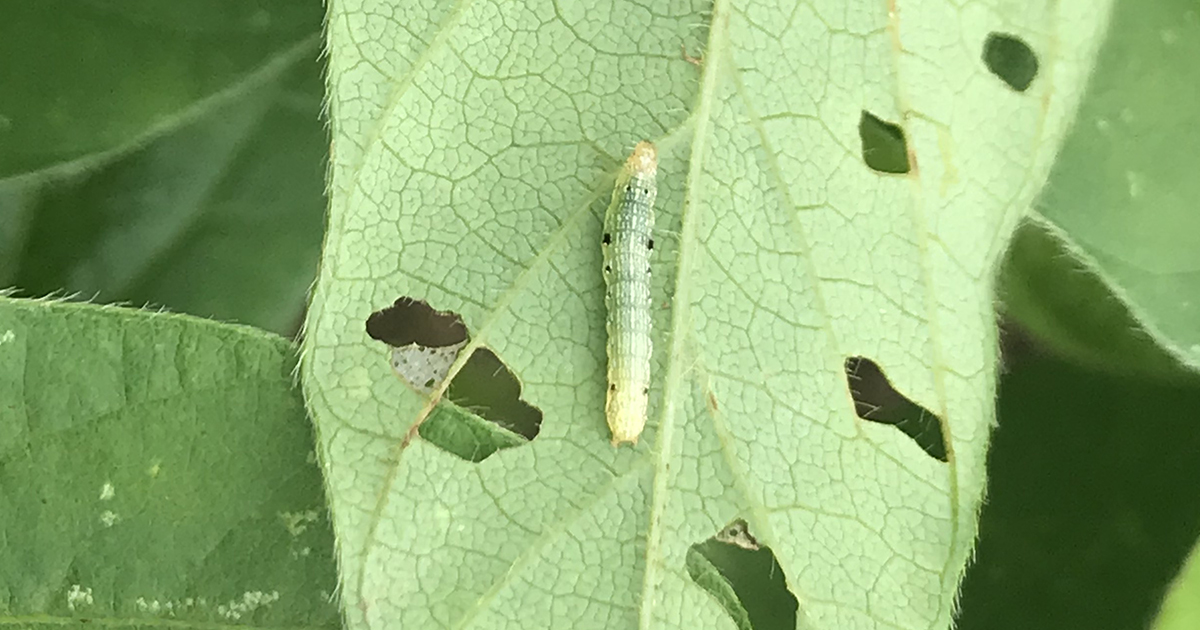 Suspected cluster caterpillar feeding on young leaves.
Suspected cluster caterpillar feeding on young leaves.
Week 6
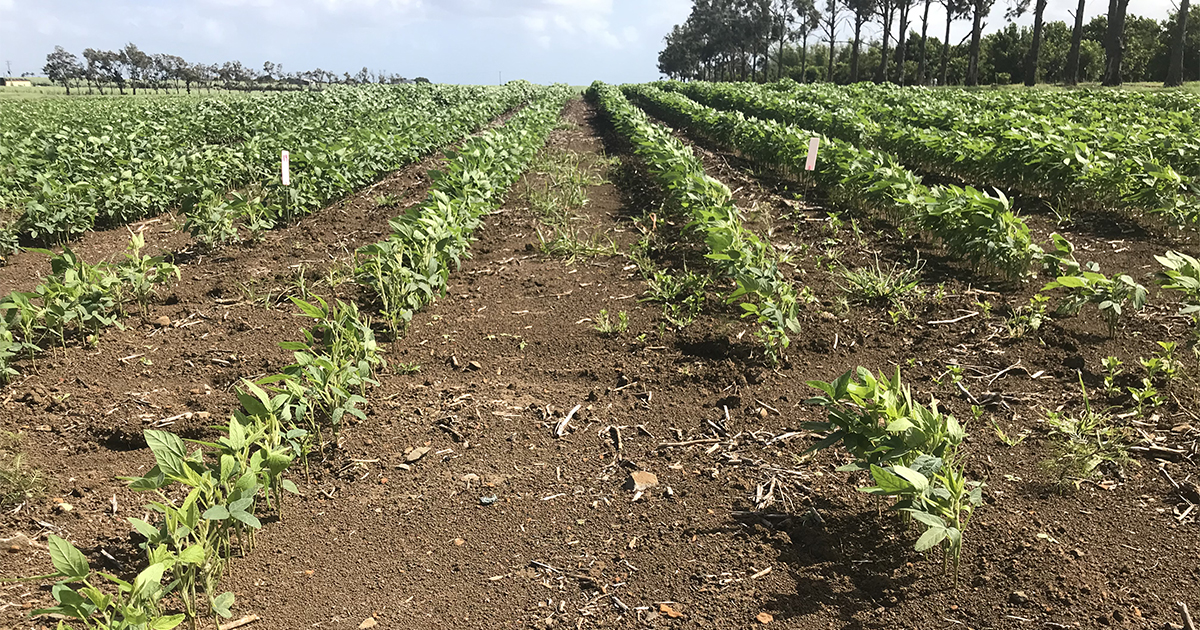
Management notes:
- Overall soybean health is good. Moderate amount of leaf chewing damage observed.
- In previous weeks Spinnaker was applied at label rates to control weeds with effects now showing on susceptible weed species.
- Jassids are also present in moderate numbers in the soybeans. The ‘stipling’ damage observed earlier in the crop is likely a result of jassid feeding. Control of these insects may occur in the coming week.
- Beneficials are emerging in the crop with a hot spot of ladybird larvae observed.
- Soil moisture levels are good, there is no need for irrigation at this time.
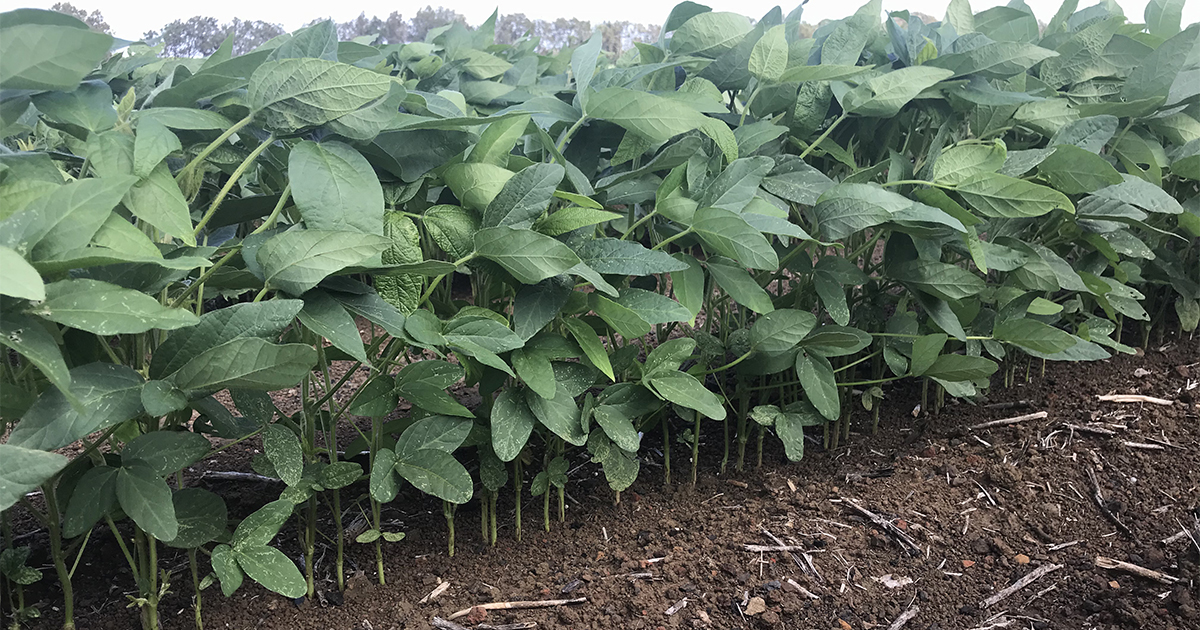 The stippled pattern previously observed on the leaves is thought to be from jassid feeding.
The stippled pattern previously observed on the leaves is thought to be from jassid feeding.
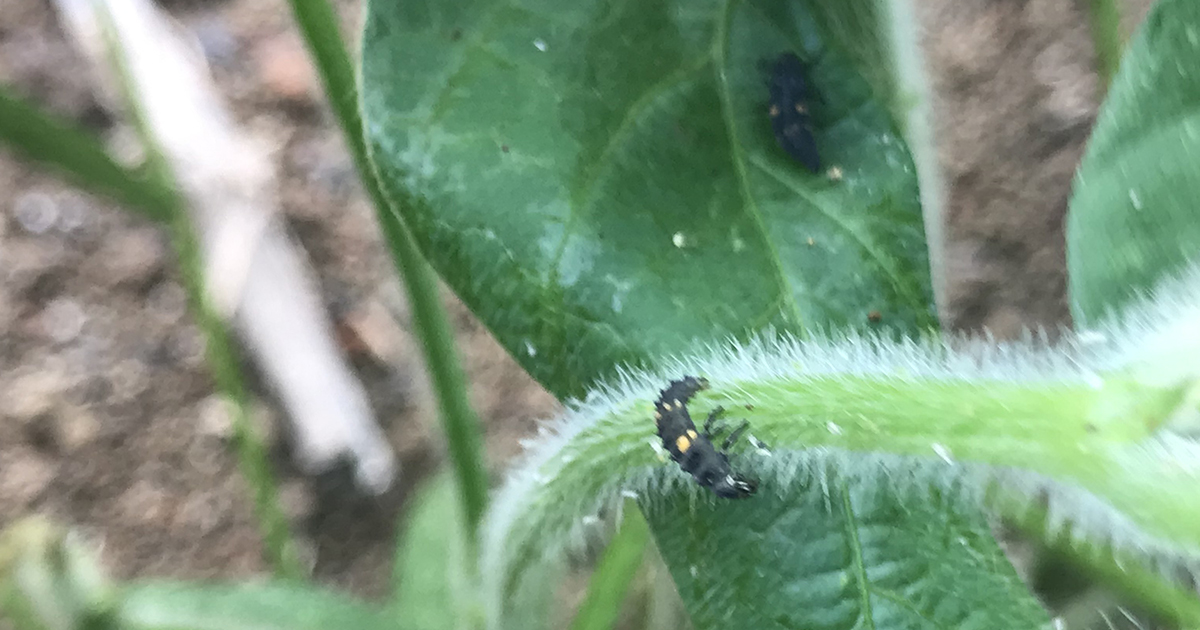 Beneficials such as ladybird larvae have been observed in the crop.
Beneficials such as ladybird larvae have been observed in the crop.
Week 7

Management notes:
- Soybeans are growing vigorously and are green and healthy.
- Flowering is happening for most plants.
- Cluster caterpillar were observed in small population and very little new leaf damage.
- 1st instar nymphs of spined predatory bugs were observed today as well as some more of their egg rafts. Ladybirds were also observed.
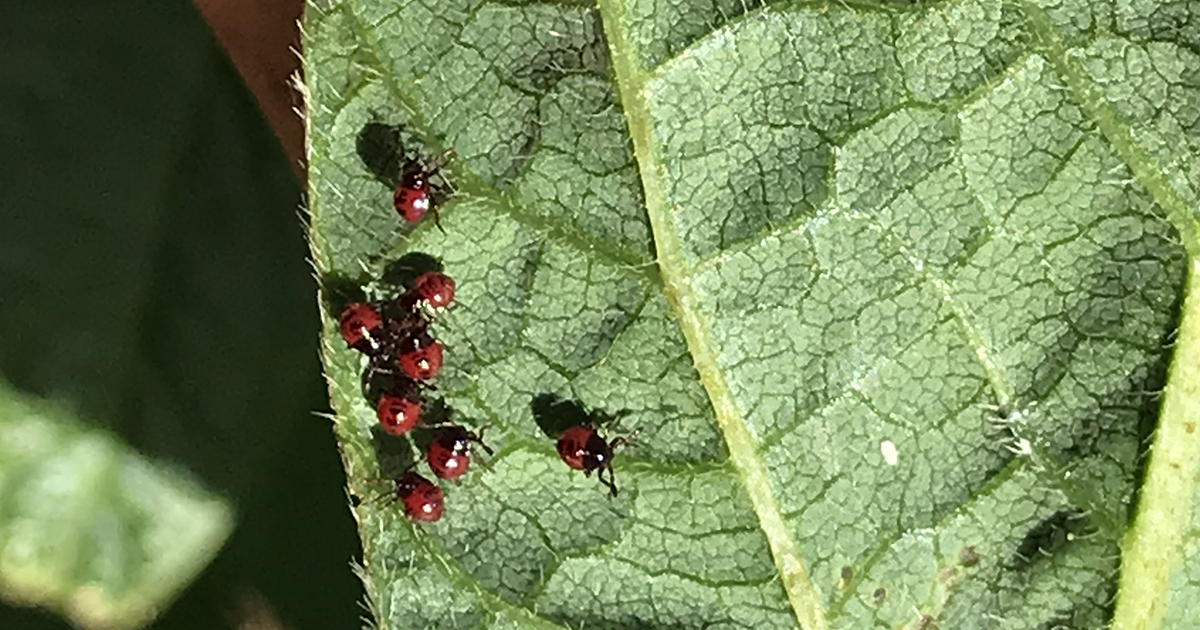 1st instar nymphs of spined predatory bugs
1st instar nymphs of spined predatory bugs
 Flowering in full swing.
Flowering in full swing.
Week 8
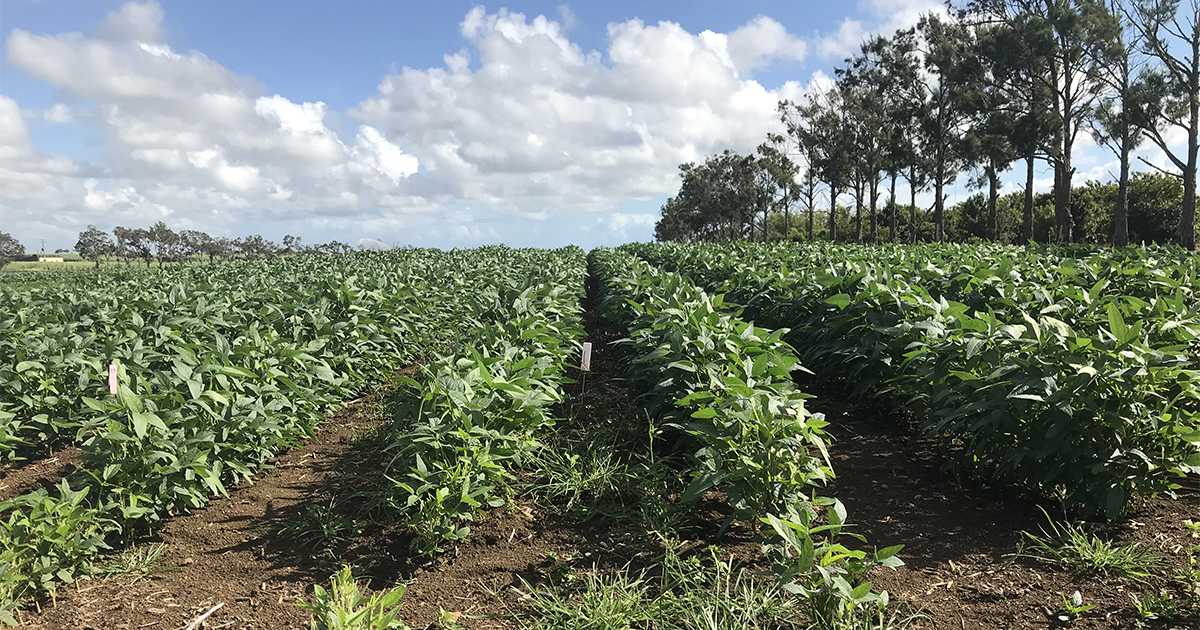
Management notes:
- The soybeans are growing well and are green and healthy.
- There were very few signs of pest pressure in this block, however beneficials such as ladybirds were present.
- Bacchus was applied to the soybeans last week to control the moderate population of small heliothis in the crop which seems to have been successful.
- Irrigation is scheduled for this week to improve soil moisture.
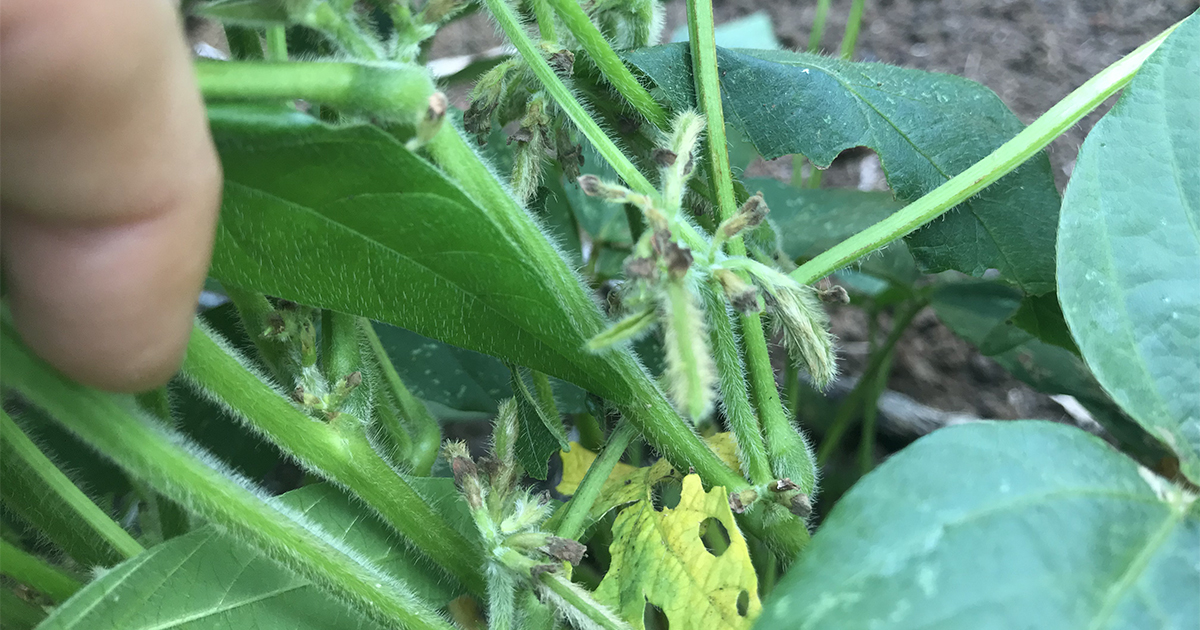
Week 9-10
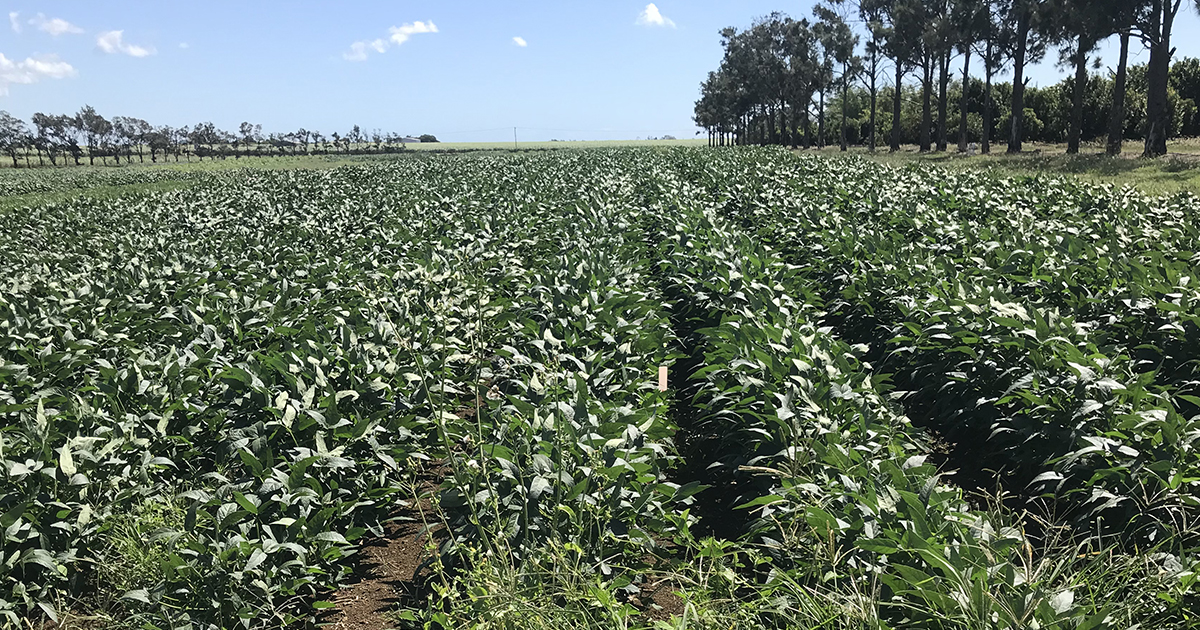
Management notes:
- Plants are green and healthy, with minimal damage from pests.
- Small number of broadleaf and grass weed observed.
- Beneficials such as predatory spined shield bug nymphs, spiders and ladybirds were all present in large numbers in the crop.
- There were loopers, red-banded shield bugs and green vegetable bugs observed at moderate populations, and a large number of moths flying around the crop.
- Decis Options + Salt was applied to control the pod sucking insects and loopers.
- Irrigation is proposed late this week.
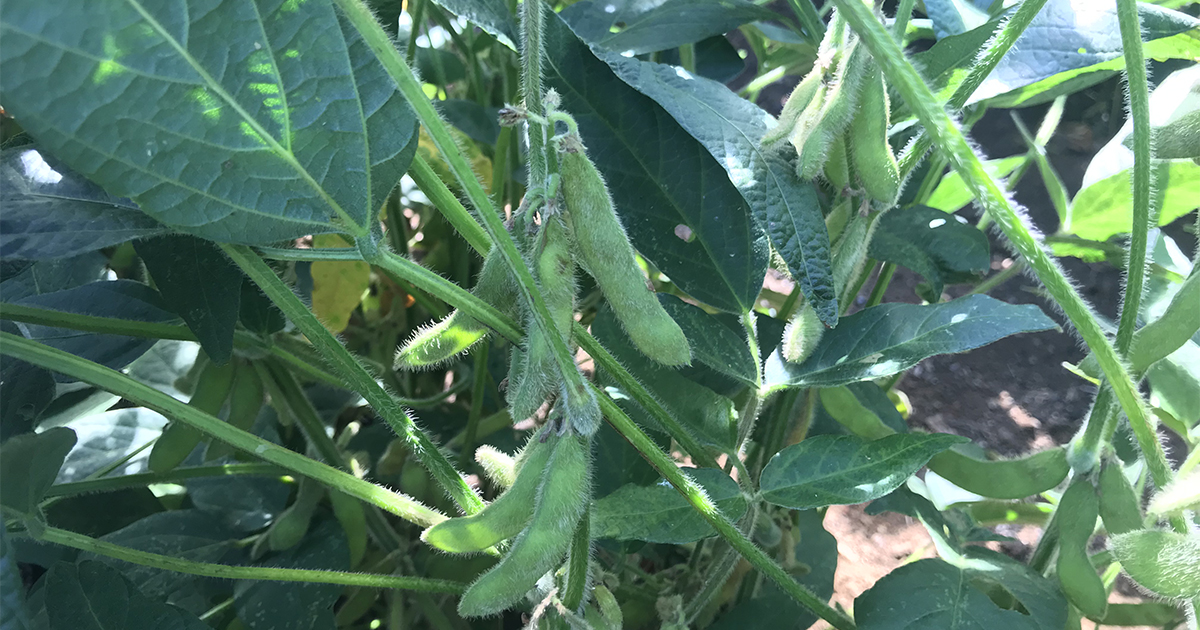 Immature pods.
Immature pods.
Week 11–13
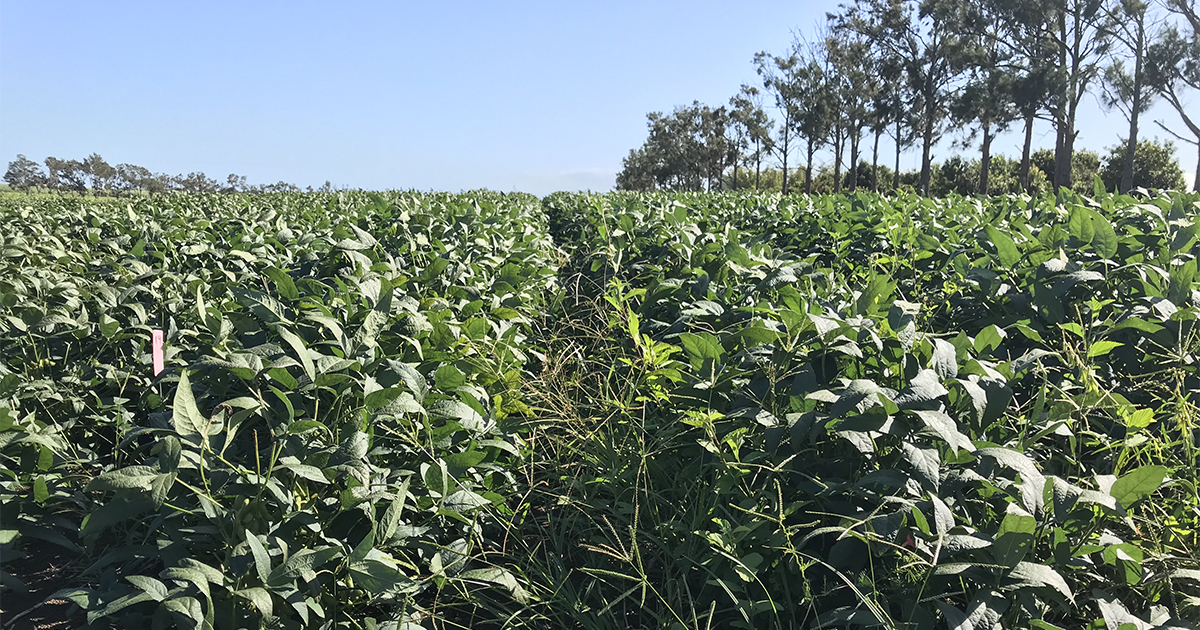
Management notes:
- Crop is green and healthy and well into pod filling.
- There were no major pests observed in crop and very little damage observed on pods and leaves.
- Several pods appear to have a brown discolouration (see photo below).
- An application of Shield and salt (on permit 86221) was made within the last 2 weeks to control moderate population of red-banded shield bugs.
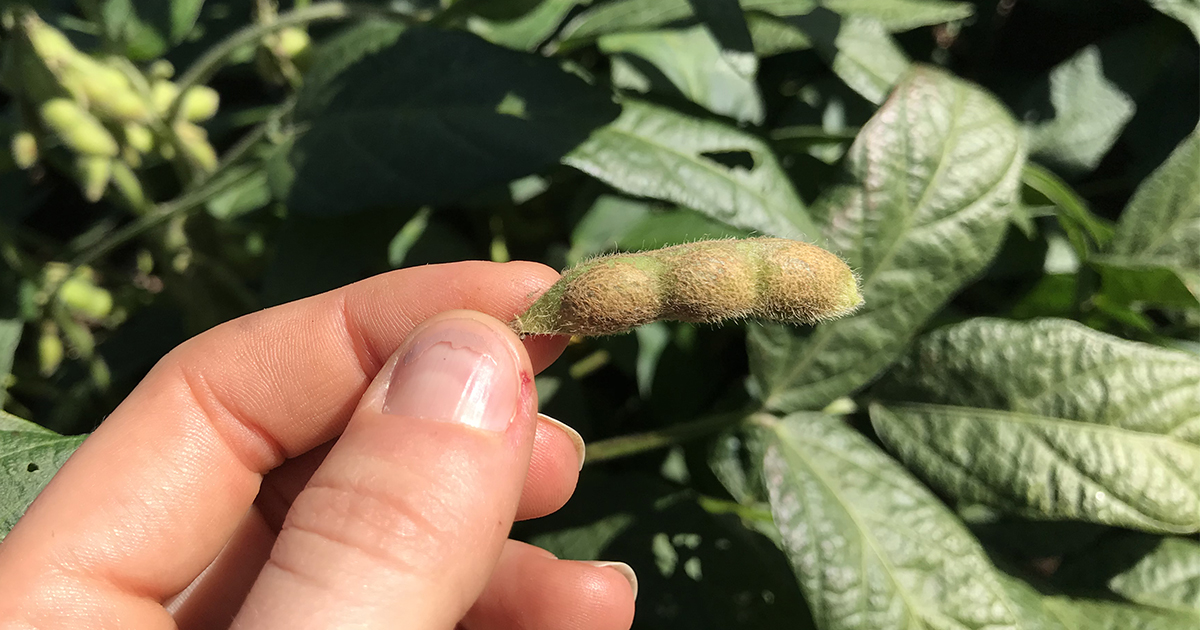 Brown colour on pods. What's your diagnosis?
Brown colour on pods. What's your diagnosis?
Week 14
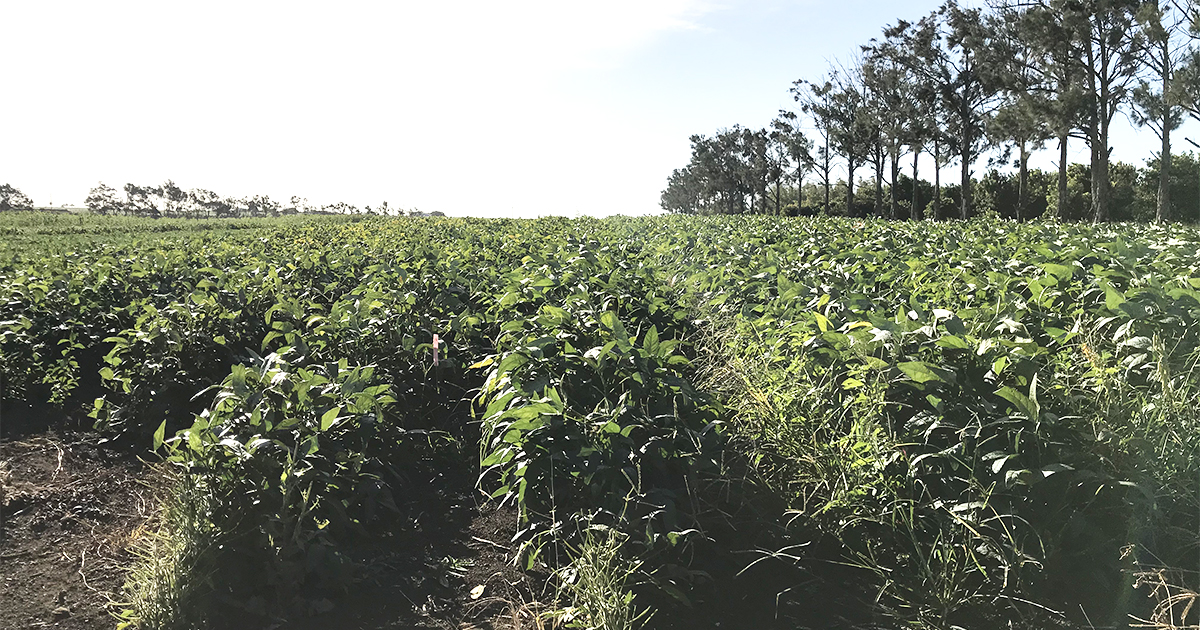
Management notes:
- Plant senescence has begun over the last week in the soybeans.
- The pods are still relatively green but filling very well and there is a large percentage of triple pods in the crop.
- Pest pressure this week seems low. There is evidence of kangaroos or wallabies jumping through the crop and flattening plants though.
- Relatively good soil moisture under this crop.
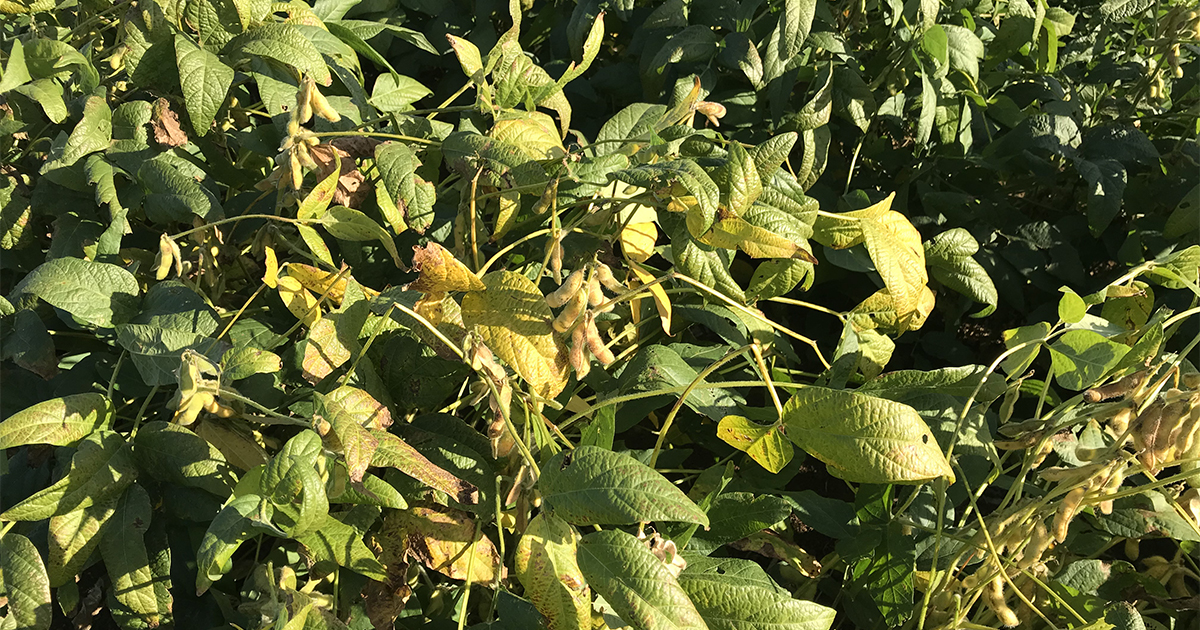 Starting to mature.
Starting to mature.
Week 15-16
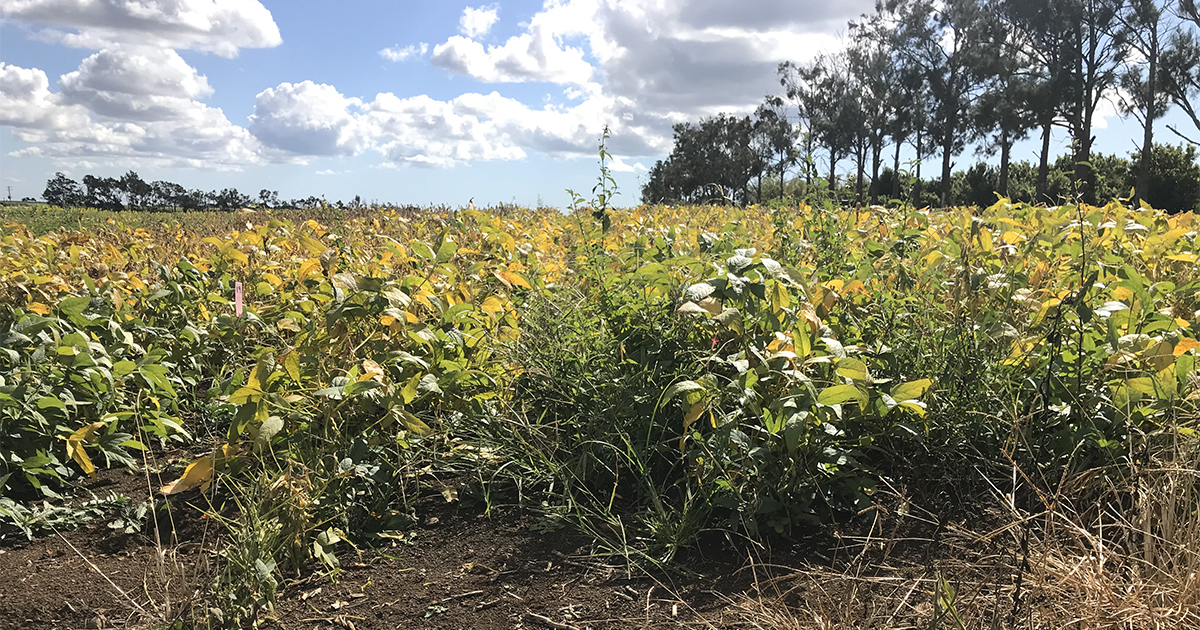
Management notes:
- Plant senescence is well underway over the last few weeks with majority of the plants across the block turning yellow, and pods brown.
- Another irrigation was made about 2 weeks ago, but slightly late and hence the rapid senescence of the plants.
- This block of soybeans will be harvested for grain as part of this trial work and will be sprayed out with Reglone herbicide.
- Even though the soybeans were planted quite late they still have a decent yield, which is another valuable finding from the trial.
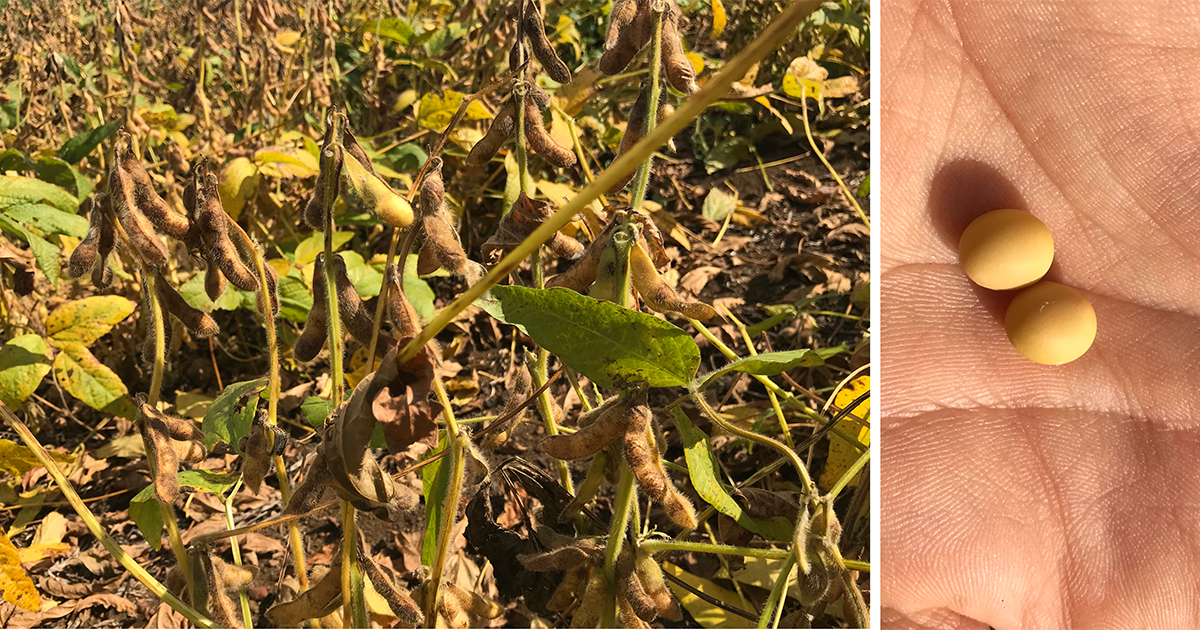 The crop looks like it will yield well, despite the late start.
The crop looks like it will yield well, despite the late start.
Read Pulse Check blog articles | Pulse Check Coastal facebook | Subscribe to the monthly newsletter

